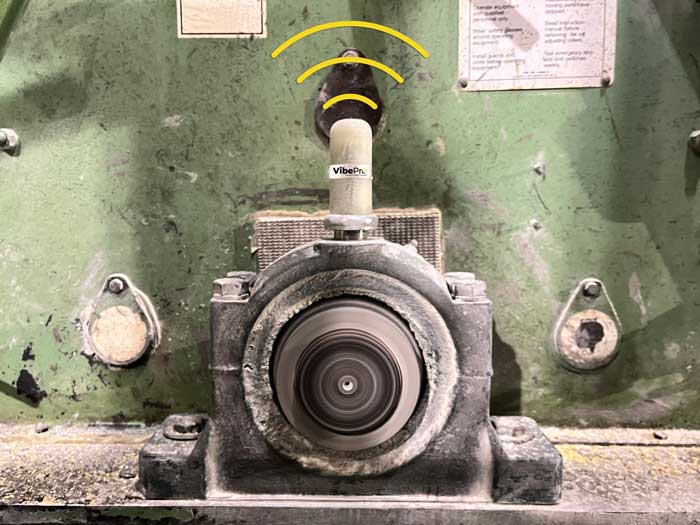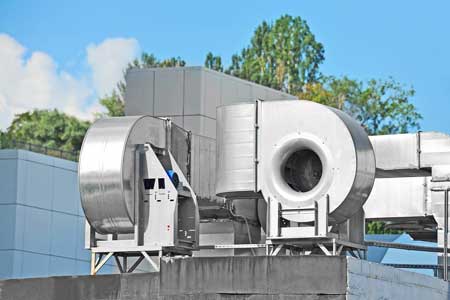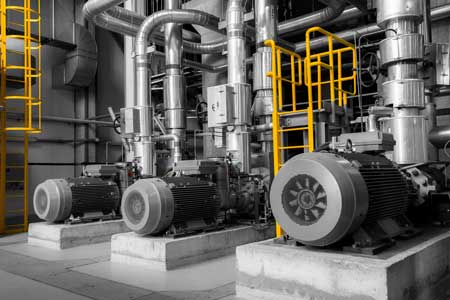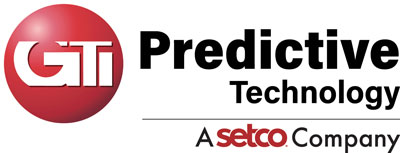
Maintaining the health and performance of manufacturing equipment is crucial for operational efficiency and cost-effectiveness. To help achieve this, operators and reliability managers are looking to predictive maintenance monitoring. As we’ve discussed before, it’s become a vital way to identify potential issues before they lead to costly breakdowns, repairs or replacements. Today, we’ll explore two main approaches to condition monitoring: route-based and permanent mount.
What is Route Based Condition Monitoring?
Route-based monitoring, sometimes called portable condition monitoring, is a predictive maintenance technique where trained technicians collect data from various pieces of equipment using portable measurement devices. These instruments usually include handheld vibration analyzers, infrared cameras, ultrasound detectors, and other diagnostic tools. The routes are scheduled either weekly, monthly or quarterly.
When making the rounds, the technician will move from machine to machine collecting specific measurements such as vibration or temperature readings. The data is then uploaded to a central database for analysis and trending. Many monitoring solutions will also present real-time graphs for immediate analysis.
Applications for Route Based Condition Monitoring
Route based condition monitoring is ideal when certain conditions exist. Generally speaking, this includes less critical equipment, cost sensitive applications, and equipment with predictable operating conditions. Let’s take a look at some common examples:
Secondary Pumps – refers to non-critical pumps found in chemical, food and beverage, gas and oil, and other similar production facilities. Secondary pumps are typically not required for continuous operation, so monthly or quarterly checks are sufficient to gauge their condition. However, plants running older equipment might want to stick to shorter cycles, as these machines are more likely to be unreliable than newer ones.
Fans – such as those used in ventilation systems, can be checked less often since they generally have a slower failure cycle, and are less critical than primary production equipment.
Spare or Backup Equipment – since these machines aren’t constantly in use, they can be monitored less intensively.
Permanent Mount Monitoring
Permanent mount monitoring, also know as continuous or online monitoring, requires the use of dedicated sensors which are affixed directly to the equipment. The sensors continuous collect and send data to centralized systems for analysis.
Unlike the route based approach, permanent monitoring allows data to be continuously collected at higher sampling rates. The sensors are often vibration accelerometers, temperature probes, oil condition sensors, ultrasound sensors, and others.
Permanent Mount Monitoring Applications
 Permanent mount condition monitoring should be utilized for critical or high risk equipment. It’s also better suited for machinery in harder to reach locations within a facility. It becomes crucial in situations where failure could cause significant downtime, safety hazards or environmental damage. Typical examples include power plant turbines, compressors used in mining and refining, or any motor powering a critical manufacturing function. Permanent mount is also ideal for machines with fluctuating operating conditions such as variable loads, speeds or other factors. Examples include variable-speed mixers or gas turbines that frequently ramp up and down. Let’s take a look at a few more use cases:
Permanent mount condition monitoring should be utilized for critical or high risk equipment. It’s also better suited for machinery in harder to reach locations within a facility. It becomes crucial in situations where failure could cause significant downtime, safety hazards or environmental damage. Typical examples include power plant turbines, compressors used in mining and refining, or any motor powering a critical manufacturing function. Permanent mount is also ideal for machines with fluctuating operating conditions such as variable loads, speeds or other factors. Examples include variable-speed mixers or gas turbines that frequently ramp up and down. Let’s take a look at a few more use cases:
Air Compressors – found throughout many manufacturing operations, compressors perform many key functions such as operating machinery, powering pneumatics tools, controlling robotic and material handling systems, and much more. Due to the criticality of these functions, they are ideal candidates for permanent condition monitoring.
Cooling Tower Fans – these critical components are typically found in hard-to-access areas which can be dangerous for technicians, making them ideal for permanent monitoring. However, since they are subject to harsh conditions, they may also require routine visual inspection to assess the condition of blades, belts, and other key components.
Consider a Hybrid Approach
In many cases, a mixture of both permanent and route based methods may be used. Here, high value/critical equipment is permanently monitored while less crucial assets are routinely checked. This approach is ideal for smaller and medium sized facilities that have fewer financial and human resources than major manufacturers. It’s also a good approach for companies that want to get familiar with predictive maintenance on a small scale before making larger commitments.
Permanent or Route Based – What’s The Best Method?
 Once you have committed to doing asset monitoring to help keep your production running smoothly, you’ve already made the most important decision. You’ve chosen to take action to avoid costly, catastrophic failures. The ideal approach will vary, but please consider the following:
Once you have committed to doing asset monitoring to help keep your production running smoothly, you’ve already made the most important decision. You’ve chosen to take action to avoid costly, catastrophic failures. The ideal approach will vary, but please consider the following:
- The overall size of your operation, and the criticality of the equipment you are running.
- The skill level of your technicians. If they are trained on vibration monitoring or other methods, route based might be better suited.
- If your techs are more entry level, permanent could be a better way to go. In this case, you would rely on a third-party partner such as VibePro to analyze the data and provide maintenance to do lists and comprehensive plans.
- The decision often involves weighing the higher upfront costs of permanent vs the long-term benefits of continuous data and reduced manual efforts. Training costs must be considered as well.
- Don’t forget the hybrid approach!
Ultimately, the best monitoring approach depends on your specific operational needs, equipment criticality, and available resources. While route-based monitoring offers flexibility and lower up-front costs, permanent mount solutions provide continuous monitoring. A hybrid approach can offer the best of both worlds, where applicable.
Above all, the goal is to implement a predictive maintenance program that maximizes equipment reliability, minimizes downtime, and optimizes maintenance resources. By carefully considering your requirements, you can develop the ideal solution that enhances your operational efficiency, bottom line and ability to remain competitive.
Unsure which approach is best for your operation? Contact the experts at VibePro, we’d be happy to hear about your needs and offer the best solution.
